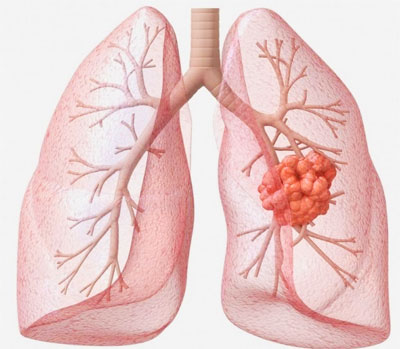Lighting the Way for Early Diagnosis of Stomach Cancer
Stomach cancer, also known as gastric cancer, is currently the second most common cause of cancer death worldwide. This cancer also has the fourth highest incidence, with approximately 830,000 new cases diagnosed each year, according to the International Agency for Research on Cancer. In the vast majority of cases, there are no symptoms other than some occasional, indistinct belly pains or other kinds of discomfort.
Often stomach cancer is mistaken for an ulcer; on rare occasions, after treatment for ordinary stomach ulcers, people may discover that they have been afflicted with a stomach tumor. Since this is the rare exception, stomach cancer is typically detected only after it has reached an advanced, hard-to-treat stage. The ideal situation would be to have it detected at a much earlier and thus more treatable stage.
Photodiagnosis (PDD) is a non-invasive, light-based approach to diagnosis that can help oncologists detect cancer at its earliest stages. In its simplest form, the approach entails giving a suitable light-sensitizing substance (photosensitizer) before illuminating the suspicious tissue with light source such as laser or LED. In the case of the stomach, a scope carrying the light source is passed down the esophagus and into the stomach. The physician then looks for areas that are “glowing” or showing fluorescence. Though the fluorescent signal tends to be weak, detection can be enhanced with the aid of image intensifiers and specially designed video cameras, along with other types of sophisticated technology.
What the Research Shows
So far, the use of PDD has brought about some encouraging results. As far back as the 1960s, fluorescence was observed in eight out of every ten patients with either bronchial or gastrointestinal carcinomas. PDD not only provided in positive fluorescence in patients with various malignant tumor types; it also picked up benign tumors, though much less often than malignant tumors. The PDD approach can also help differentiate high-grade dysplasia or stomach adenocarcinoma from normal tissue in the stomach.
In a recent study at Kochi Medical School in Kochi, Japan, PDD was performed in 21 stomach cancer patients during surgery. Prior to the operation, 5-aminolevulinic acid (ALA) was given orally through a stomach tube. After removing the tumor, the tumor tissues were investigated by an endoscopic PDD system, and red fluorescence-positive lesions were compared with the pathological result. Red fluorescence was detected in 15 lesions of 11 patients. The specificity and sensitivity of PDD in detecting stomach cancer were 100% and 58%, respectively.
Thus, in this study, fluorescence navigation by PDD provided good visualization and adequate detection of stomach cancer lesions, and might be particularly useful for the so-called intestinal-type stomach cancer. The incidence of intestinal-type stomach tumors was more than three times higher in PDD-positive compared to PDD-negative patients. (Note: This type is most often seen in older patients and also predominates in China, Japan, and other East Asian countries. The Kochi research team concluded that ALA-PDD seems to be a promising diagnostic tool for stomach cancer, as reported in the March 2014 Journal of Surgical Oncology.
By detecting precancerous growths, photodiagnosis provides vital information for anyone hoping to avoid a malignancy. This information can be used to help alert you, the patient, to the need to be more aggressively proactive in your efforts to ward off cancer, perhaps using a combination of nutritional, herbal and innovative medical strategies. As a novel method of tumor detection, photodiagnosis could very well play a central role in the medicine of the future—an approach grounded in the authentic, biologically guided practice of preventive medicine.
Support us by buying our book, The Medicine of Light, and ebooks from our Photoimmune Discoveries eBook Series.
Sources
Namikawa T1, Inoue K, Uemura S, Shiga M, Maeda H, Kitagawa H, Fukuhara H, Kobayashi M, Shuin T, Hanazaki K. Photodynamic diagnosis using 5-aminolevulinic acid during gastrectomy for gastric cancer. J Surg Oncol. 2014 Mar;109(3):213-7.
Shishkova N1, Kuznetsova O, Berezov T. Photodynamic therapy in gastroenterology. J Gastrointest Cancer. 2013 Sep;44(3):251-9.
Huang P1, Lin J, Wang X, Wang Z, Zhang C, He M, Wang K, Chen F, Li Z, Shen G, Cui D, Chen X. Light-triggered theranostics based on photosensitizer-conjugated carbon dots for simultaneous enhanced-fluorescence imaging and photodynamic therapy. Adv Mater. 2012 Sep 25;24(37):5104-10.
Allison RR, Sibata CH. Oncologic photodynamic therapy photosensitizers: a clinical review. Photodiagnosis Photodyn Ther. 2010 Jun;7(2):61-75.
© Copyright 2014, Photoimmune Discoveries, BV



 English
English Français
Français Deutsch
Deutsch Nederlands
Nederlands